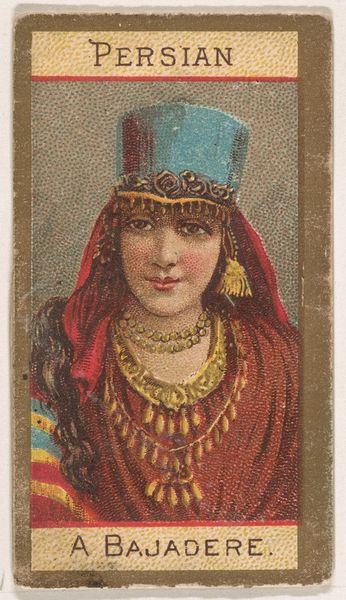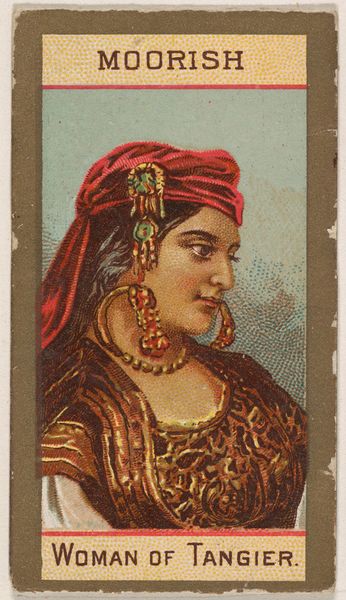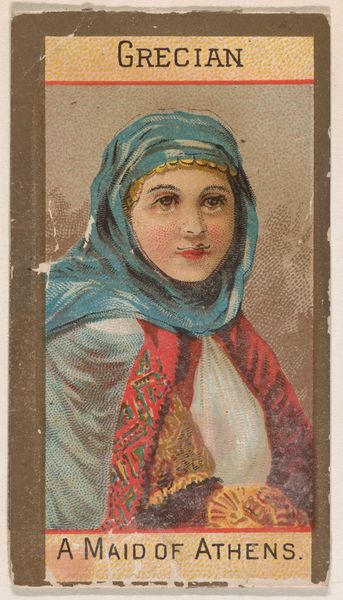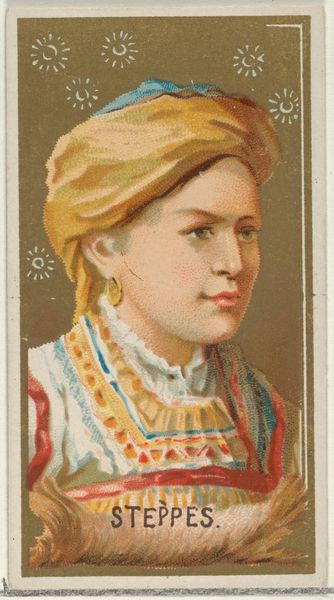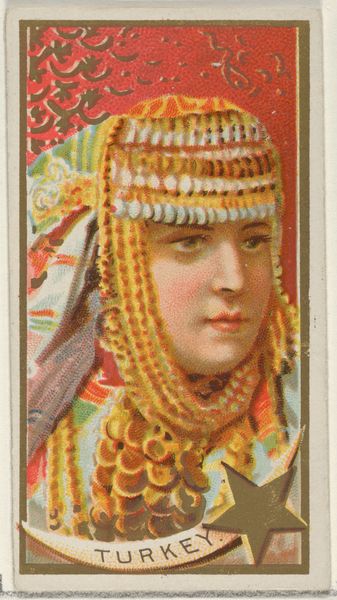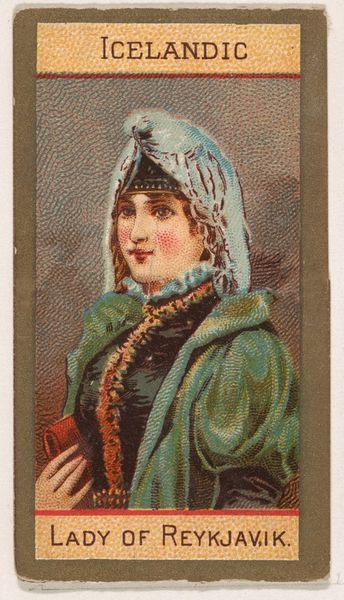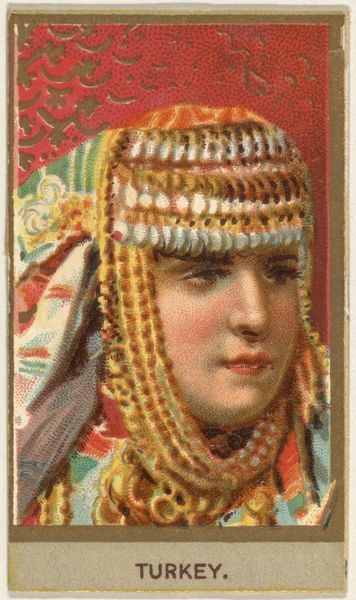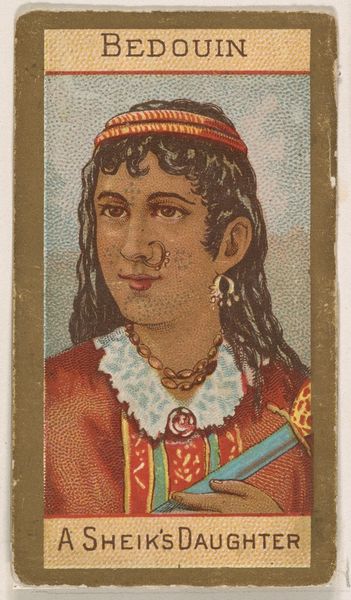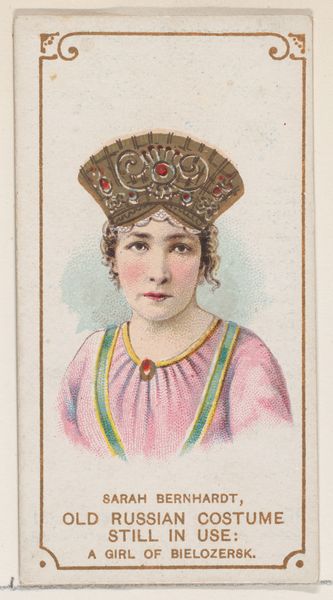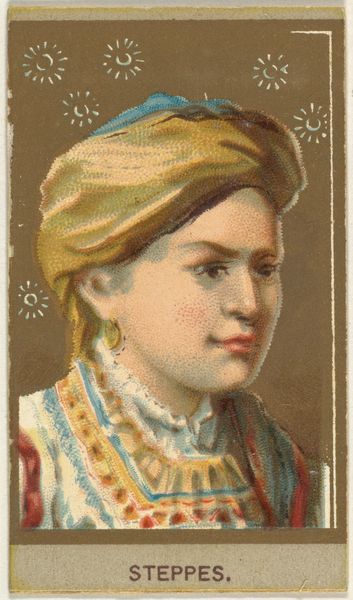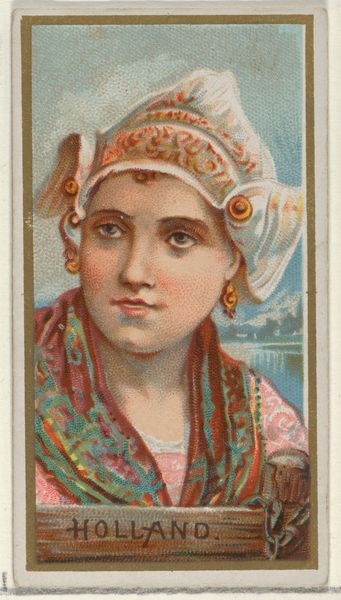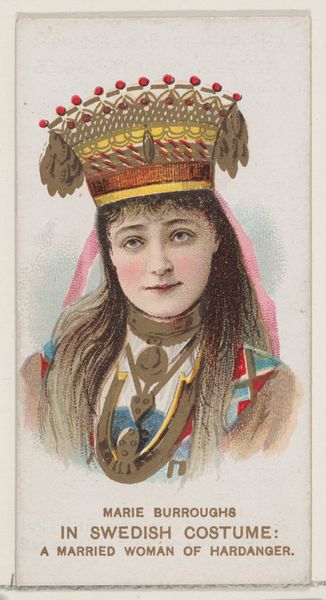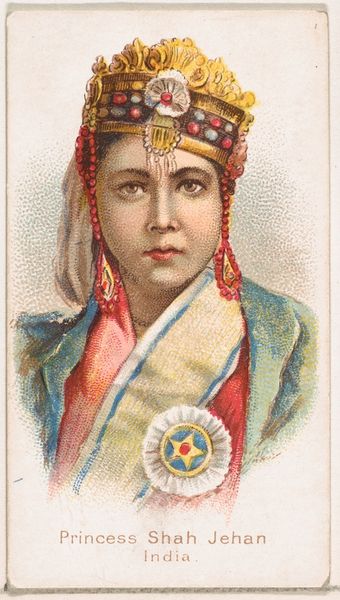
Tartar, Woman of the Volga, from Types of Nationalities (N240) issued by Kinney Bros. 1890
0:00
0:00
drawing, coloured-pencil, print
#
portrait
#
drawing
#
coloured-pencil
# print
#
coloured pencil
#
orientalism
#
genre-painting
#
academic-art
Dimensions: Sheet (Folded): 2 11/16 × 1 7/16 in. (6.8 × 3.7 cm) Sheet (Unfolded): 6 7/8 × 1 7/16 in. (17.4 × 3.7 cm)
Copyright: Public Domain
Editor: So, here we have a coloured pencil print from 1890, "Tartar, Woman of the Volga" issued by Kinney Brothers. It seems like a fairly straightforward portrait at first glance, but the framing as a 'type' makes me wonder about how this woman, and her culture, were being presented and consumed. What's your take on it? Curator: Well, it's crucial to understand these Kinney Brothers cards within the context of late 19th-century cultural and economic forces. Tobacco companies often used such cards as promotional tools. The images themselves, frequently portraying 'exotic' ethnic groups, reveal a widespread interest in—and, importantly, a Western gaze upon—the rest of the world. Consider the term 'Tartar' itself. What does that signify to you? Editor: It suggests a somewhat generalized, maybe even a stereotypical, view of people from that region...almost as if she represents a type, not an individual. Curator: Precisely. The title frames her as representative rather than unique. Think about how Orientalism as an artistic and academic trend at that time played a crucial role. Cards like this helped shape popular perceptions about faraway cultures and also reinforce power dynamics between the West and the East. It becomes an exercise of cultural taxonomy. In what way do you think these sorts of images affected viewers then, and now? Editor: Back then, I imagine they reinforced existing stereotypes and biases, while today, they give us a glimpse into the ways those biases were manufactured and spread. Curator: Absolutely. They highlight the politics of imagery and the responsibility institutions like ours have in critically re-evaluating and re-presenting them. The image isn’t just about the woman; it is equally about how her image functions as cultural currency. Editor: I never considered it that way before. Now I am very curious to compare it to the other images in this series. Curator: A worthy task. This really brings to the fore how images are produced and gain meaning from their socio-historical contexts.
Comments
No comments
Be the first to comment and join the conversation on the ultimate creative platform.
